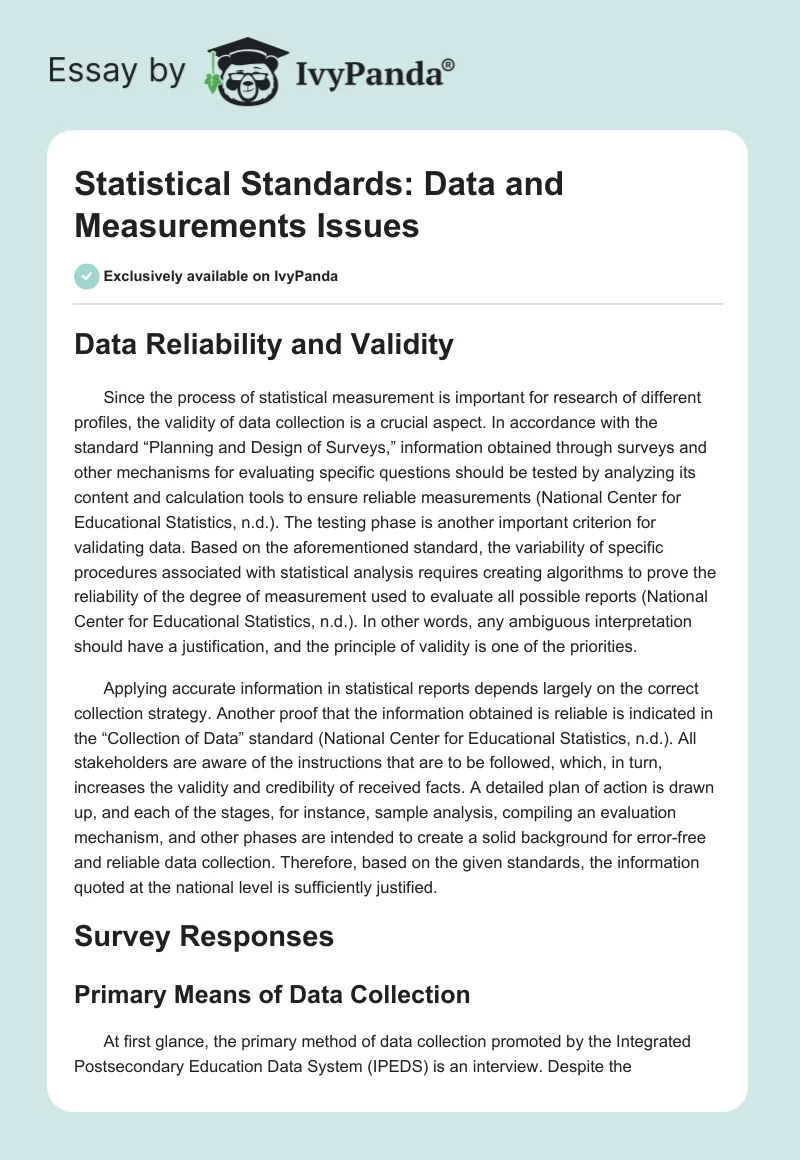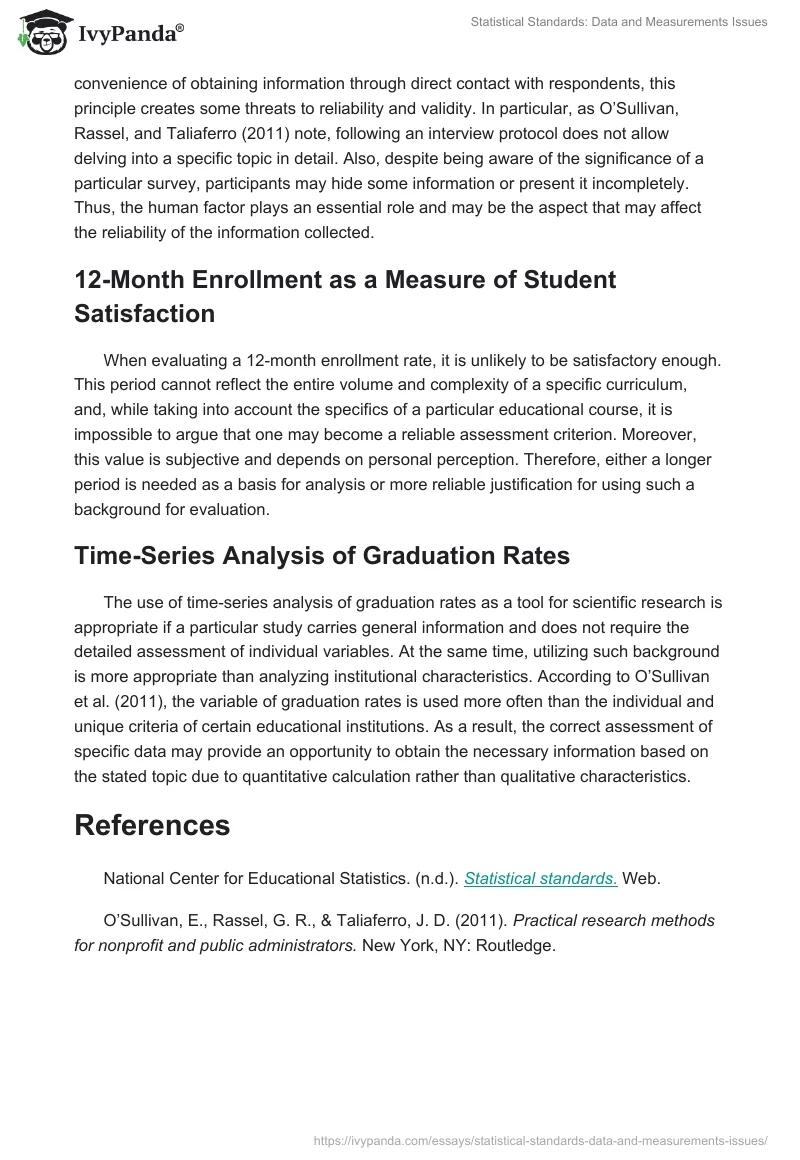Data Reliability and Validity
Since the process of statistical measurement is important for research of different profiles, the validity of data collection is a crucial aspect. In accordance with the standard “Planning and Design of Surveys,” information obtained through surveys and other mechanisms for evaluating specific questions should be tested by analyzing its content and calculation tools to ensure reliable measurements (National Center for Educational Statistics, n.d.). The testing phase is another important criterion for validating data. Based on the aforementioned standard, the variability of specific procedures associated with statistical analysis requires creating algorithms to prove the reliability of the degree of measurement used to evaluate all possible reports (National Center for Educational Statistics, n.d.). In other words, any ambiguous interpretation should have a justification, and the principle of validity is one of the priorities.
Applying accurate information in statistical reports depends largely on the correct collection strategy. Another proof that the information obtained is reliable is indicated in the “Collection of Data” standard (National Center for Educational Statistics, n.d.). All stakeholders are aware of the instructions that are to be followed, which, in turn, increases the validity and credibility of received facts. A detailed plan of action is drawn up, and each of the stages, for instance, sample analysis, compiling an evaluation mechanism, and other phases are intended to create a solid background for error-free and reliable data collection. Therefore, based on the given standards, the information quoted at the national level is sufficiently justified.
Survey Responses
Primary Means of Data Collection
At first glance, the primary method of data collection promoted by the Integrated Postsecondary Education Data System (IPEDS) is an interview. Despite the convenience of obtaining information through direct contact with respondents, this principle creates some threats to reliability and validity. In particular, as O’Sullivan, Rassel, and Taliaferro (2011) note, following an interview protocol does not allow delving into a specific topic in detail. Also, despite being aware of the significance of a particular survey, participants may hide some information or present it incompletely. Thus, the human factor plays an essential role and may be the aspect that may affect the reliability of the information collected.
12-Month Enrollment as a Measure of Student Satisfaction
When evaluating a 12-month enrollment rate, it is unlikely to be satisfactory enough. This period cannot reflect the entire volume and complexity of a specific curriculum, and, while taking into account the specifics of a particular educational course, it is impossible to argue that one may become a reliable assessment criterion. Moreover, this value is subjective and depends on personal perception. Therefore, either a longer period is needed as a basis for analysis or more reliable justification for using such a background for evaluation.
Time-Series Analysis of Graduation Rates
The use of time-series analysis of graduation rates as a tool for scientific research is appropriate if a particular study carries general information and does not require the detailed assessment of individual variables. At the same time, utilizing such background is more appropriate than analyzing institutional characteristics. According to O’Sullivan et al. (2011), the variable of graduation rates is used more often than the individual and unique criteria of certain educational institutions. As a result, the correct assessment of specific data may provide an opportunity to obtain the necessary information based on the stated topic due to quantitative calculation rather than qualitative characteristics.
References
National Center for Educational Statistics. (n.d.). Statistical standards. Web.
O’Sullivan, E., Rassel, G. R., & Taliaferro, J. D. (2011). Practical research methods for nonprofit and public administrators. New York, NY: Routledge.


